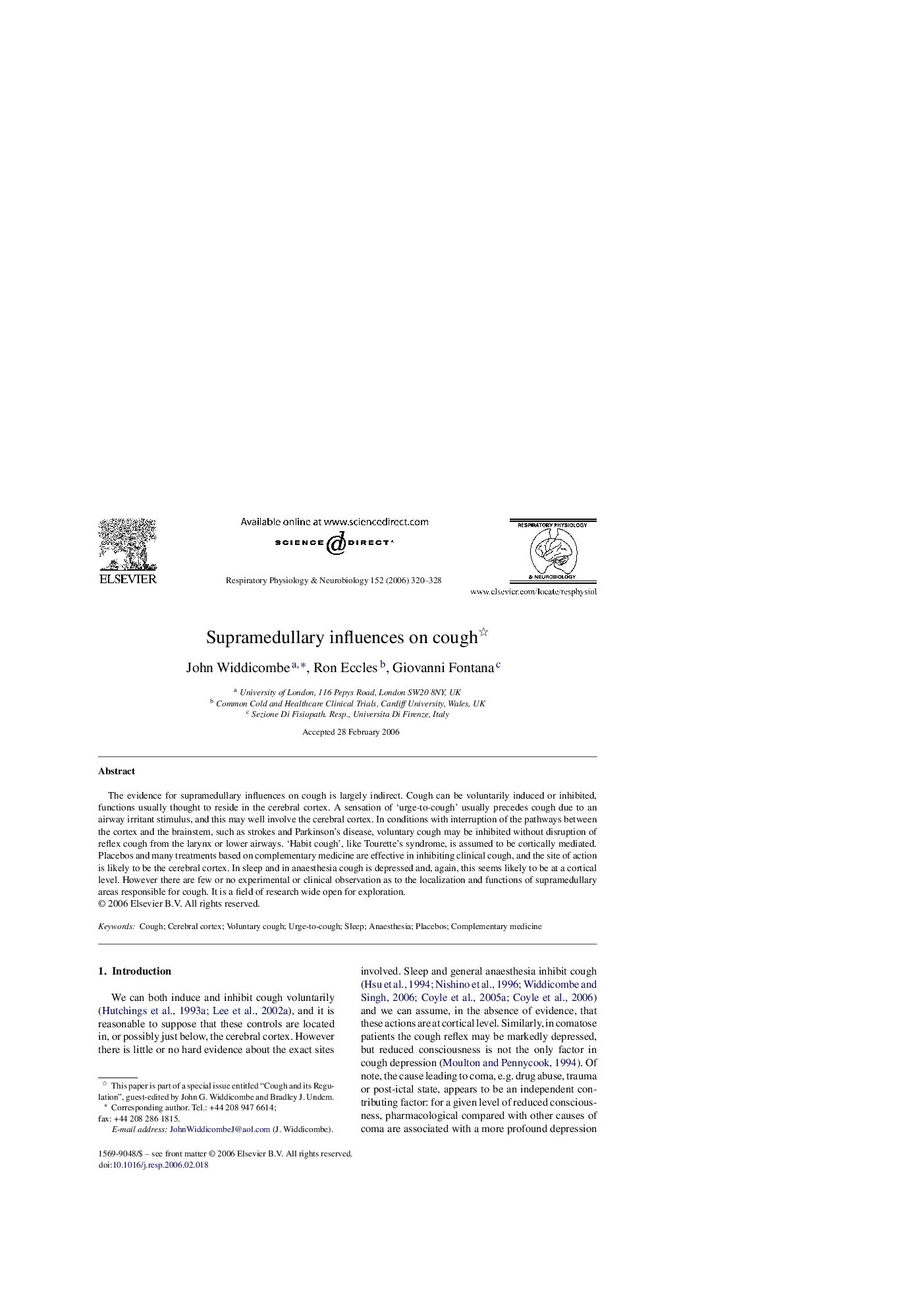| Article ID | Journal | Published Year | Pages | File Type |
|---|---|---|---|---|
| 2848574 | Respiratory Physiology & Neurobiology | 2006 | 9 Pages |
The evidence for supramedullary influences on cough is largely indirect. Cough can be voluntarily induced or inhibited, functions usually thought to reside in the cerebral cortex. A sensation of ‘urge-to-cough’ usually precedes cough due to an airway irritant stimulus, and this may well involve the cerebral cortex. In conditions with interruption of the pathways between the cortex and the brainstem, such as strokes and Parkinson's disease, voluntary cough may be inhibited without disruption of reflex cough from the larynx or lower airways. ‘Habit cough’, like Tourette's syndrome, is assumed to be cortically mediated. Placebos and many treatments based on complementary medicine are effective in inhibiting clinical cough, and the site of action is likely to be the cerebral cortex. In sleep and in anaesthesia cough is depressed and, again, this seems likely to be at a cortical level. However there are few or no experimental or clinical observation as to the localization and functions of supramedullary areas responsible for cough. It is a field of research wide open for exploration.
